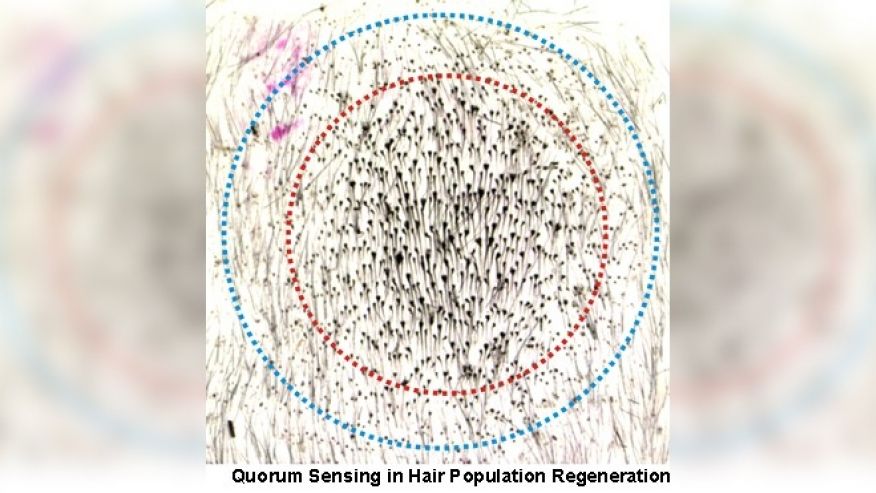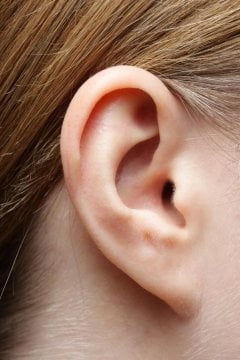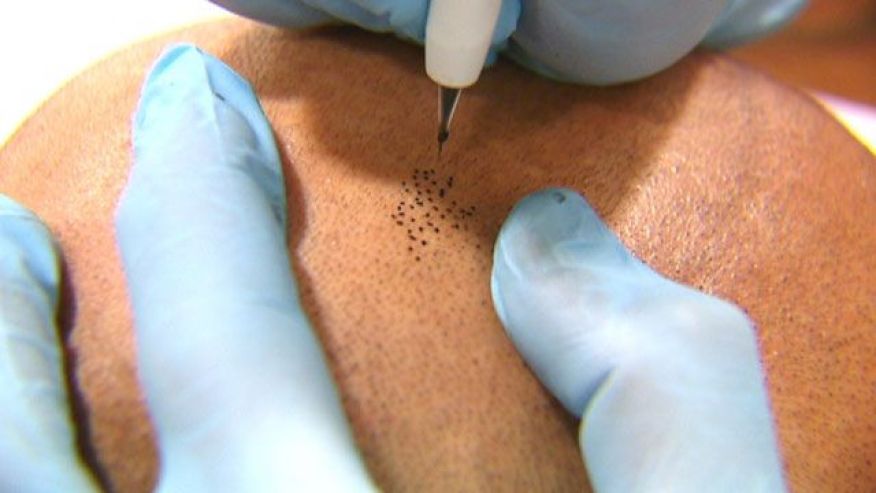Botox is a drug made from a neurotoxin produced by the bacterium Clostridium botulinum called botulinum toxin.It is used medically to treat certain muscular conditions and cosmetically remove wrinkles by temporarily paralyzing muscles.
Botulinum toxin is sold commercially under the names:
- Botox, Vistabel, Botox cosmetic (OnabotulinumtoxinA or botulinum toxin type A)
- Dysport (AbobotulinumtoxinA or botulinum toxin type A)
- Bocouture, Xeomin (IncobotulinumtoxinA or botulinum toxin type A)
- Myobloc (RimabotulinumtoxinB or botulinum toxin type B).
Here are some key points about Botox. More detail and supporting information is in the main article.
- Botox is the most popular cosmetic surgery treatment, with more than 6 million Botox treatments administered each year.
- Botox is a neurotoxin derived from Clostridium botulinum, an organism found in the natural environment where it is largely inactive and non-toxic.
- Botulinum toxin is used to reduce fine lines and wrinkles by paralysing the underlying muscles.
- People also use Botox to treat excessive sweating, migraines, muscular disorders, and some bladder and bowel disorders.
- Botulism, an infection with botulinum toxin, can cause respiratory failure and prove deadly.
- Just one gram of botulinum toxin could kill over a million people. Two kilograms could kill the entire human population of Earth.
The origin of botox
Clostridium botulinum, the organism from which Botox is derived, is found in inactive form in the natural environment, including in the forest and cultivated soils, and in the sediment of lakes, streams, coastal and untreated waters.
The bacterium can also be found in the intestinal tracts of mammals and fish and in the gills and viscera of crabs and other shellfish. Such naturally occurring instances of Clostridium botulinum bacteria and spores are typically relatively harmless. Problems only usually arise when the spores transform into vegetative cells and the cell population increases to the point where the bacteria begin producing botulinum toxin, the deadly neurotoxin responsible for botulism.
Neurotoxins target the nervous system, disrupting the signaling processes that allow neurons to communicate effectively. The neurotoxin involved in producing Botox, botulinum toxin (abbreviated either as BTX or BoNT), is subdivided into eight types A, B, C [C1, C2], D, E, F, G 18 and H.19
Of these, types A, B, E and, in rare cases, type F cause botulism in humans, while types C and D cause illness in other mammals, birds and fish.14 Although type G has been isolated from soil in Argentina, no outbreaks have been identified involving this toxin.21
Type H was discovered in 2013 in the feces of a child suffering from botulism. Researchers withheld the specific DNA sequence of type H from public databases, as there was no known antidote for what they believed was a novel type of botulinum toxin.19 Subsequently, Researchers from the Centers for Disease Control and Prevention (CDC) and the University of Wisconsin (UW) found that type H may in fact not be a novel toxin, with a paper published in the Journal of Infectious Diseases (JID) reporting that the toxin can be blocked by antitoxins already in use.25
How does botox work?
Botulinum toxin is one of the most poisonous substances known to man. Scientists have estimated that a single gram could kill as many as one million people and a couple of kilos could kill every human on earth.22 In high concentrations, botulinum toxin can result in botulism, a severe, life-threatening illness. Botulism, left untreated, may result in respiratory failure and death.16 Despite botulinum toxin being so toxic and so costly, Botox is in huge demand.

Botulinum toxin is injected to treat certain muscular conditions and cosmetically remove wrinkles by temporarily paralyzing muscles.
Botulinum toxin has proven to be a successful and valuable therapeutic protein when dosage, frequency of treatment and variety of treated clinical conditions are considered.23
“Only the dose makes a remedy poisonous”20
Botulinum toxin can be injected into humans in extremely small concentrations and works by preventing signals from the nerve cells reaching muscles, effectively leaving the muscles without instructions to contract, therefore paralyzing them.24
In order for muscles to contract, nerves release a chemical messenger, acetylcholine (a neurotransmitter), at the junction where the nerve endings meet muscle cells. The acetylcholine attaches to receptors on the muscle cells and causes the muscle cells to contract or shorten. Injected botulinum toxin prevents the release of acetylcholine, preventing contraction of the muscle cells. The effect of botulinum toxin causes a reduction in abnormal muscle contraction allowing the muscles to become less stiff.
Medical and cosmetic uses of botox
Botulinum toxin is predominantly used as a treatment to reduce the appearance of facial wrinkles and fine lines in older adults. Beyond aesthetic applications, Botox has been found useful in treating a variety of medical conditions including eye squints, migraines, excess sweating and leaky bladders. Botulinum toxin is currently used to treat over 20 different medical conditions, with more applications under investiation.
Botulinum toxin is currently approved for the following therapeutic applications:
- Blepharospasm (spasm of the eyelids)1
- Idiopathic rotational cervical dystonia (severe neck and shoulder muscle spasms) 1
- Chronic migraine3
- Severe primary axillary hyperhidrosis (excessive sweating)1
- Strabismus (crossed eyes)1
- Post-stroke upper limb spasticity4
- Detrusor overactivity urinary incontinence6
- Overactive bladder5
- Hemifacial spasm1
- Glabellar lines (frown lines between the eyebrows)2
- Canthal lines (crow’s feet).7
Botulinum toxin is also often used off-label for:
- Achalasia (an esophageal issue causing symptoms such as difficulty swallowing)8
- Anal fissure and Anismus (dysfunction of the anal sphincter)8
- Sialorrhea (hypersalivation)9
- Allergic Rhinitis10
- Sphincter of oddi (hepatopancreatic) dysfunction11
- Cerebral Palsy1
- Oromandibular dystonia (forceful contraction of the jaw, face and/or tongue)12
- Laryngeal Dystonia (forceful contraction of the vocal cords).13
How is the botox procedure performed?

Botuilinum toxin takes up to 72 hours to take effect and make a noticeable difference.
Botulinum toxin is administered by diluting the powder in saline (sodium chloride) and injecting it directly into neuromuscular tissue. It takes 24-72 hours for botulinum toxin to take effect, which reflects the time needed for the toxin to disrupt the synaptosomal process. In very rare circumstances, it may take as long as 5 days for the full effect of botulinum toxin to be observed.14
Botulinum toxin should not be used in pregnant or lactating women, or by people who have had a previous allergic reaction to the drug or any of its ingredients.
Risks and side effects of botox
Injections with botulinum toxin are generally well tolerated and there are few side effects. In rare cases an individual may have a genetic predisposition that results in a mild, transient unusual response to the drug.
Around 1% of people receiving injections of botulinum toxin type A develop antibodies to the toxin that make subsequent treatments ineffective.26 In people treated with botulinum toxin type B for cervical dystonia, antibody development has been seen up to 44% of patients.
Along with its intended effects, botulinum toxin may cause some unwanted effects. These can include:14,15
- Mild pain, local edema and/or erythema at the injection site
- Transient numbness
- Headache
- Malaise
- Mild nausea
- Temporary unwanted weakness/paralysis of nearby musculature caused by the action of the toxin
- Temporary upper lid or brow ptosis (drooping)
- Weakness of the lower eyelid or lateral rectus (a muscle controlling eye movement)
- Dysphagia
- Neck weakness
- Influenza-like illness
- Brachial plexopathy (a condition affecting the nerves either side of the neck and chest)
- Gallbladder dysfunction
- Diplopia (double vision)
- Bleeding
- Blurred vision
- Drooping of the eyelids
- Decreased eyesight
- Dry mouth
- Fatigue
- Hives
- Rashes
- Wheezing
- Swelling.
Using botulinum toxin A (Botox) injections for chronic migraine sufferers helps them “a little”, and does not appear to be the amazing therapy some people believe or claim it to be, researchers from the Medical College of Wisconsin, Milwaukee reported in JAMA (Journal of the American Medical Association). The authors added that Botox was not better than placebo in preventing chronic-tension-type headaches or episodic migraine.
A new way to block the action of botulinum toxin has been found by investigators in Australia, which may help develop effective treatments of the life-threatening disease botulism. The study is published online (August) in the International Journal of Biological Chemistry.
It appears most patients say they have better results from abobotulinumtoxinA when they contract their facial muscles, than with onabotulinumtoxinA – when muscles were at rest there was no statistical difference, researchers from The Maas Clinic, San Francisco, and the University of California, reported in Archives of Facial Plastic Surgery.
A new study published in the journal JAMA Facial Plastic Surgery finds that botox may improve the pliability and elasticity of skin for up to 4 months.
Botulinum toxin’s popularity continues to increase, with cosmetic minimally-invasive botulinum toxin type A procedures up 700 percent since 2000, to 6.3 million in 2013.
[Source:- Medicalnewstoday]
















